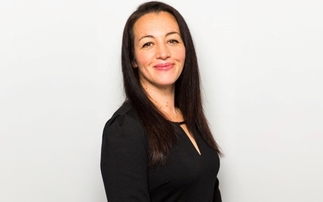
While DB schemes invest in a range of illiquid markets, DC schemes are instead highly concentrated.
Why include illiquid assets?
According to the recent Productive Finance Working Group (PFWG) report, there are three reasons to include illiquid assets in the default portfolio of a DC pension scheme.
Investing in private markets improves diversification as less liquid assets offer different return drivers and access to different markets which can reduce risk. These assets offer access to an illiquidity premium which may deliver higher risk adjusted returns net of costs and charges.
These assets also have the potential to access inflation-linked cash flows to offer members some purchasing power protection. At the moment DB schemes have access to these benefits while many DC schemes do not.
Future wealth
This is despite DC schemes being responsible for the future wealth accumulation of a majority of the UK's working age population. The current value of DB assets in the UK is estimated to be over 3.5 times the size of occupational DC assets but over time the relative sizes of these pots will shift1.
Eleven years since the launch of automatic enrolment in 2012, there are now 18 million active savers in UK workplace DC schemes. Over this period their assets have increased from around £200bn to around £600bn and are expected to double to £1.2trn by 20312.
As DC schemes grow and become a more important contributor to the wealth of UK citizens, the industry should be thinking about developing the sophistication and diversification of its asset allocation. So, what's holding schemes back?
Legacy issues
When speaking to schemes trustees about why the barriers to investing in private markets, the need for liquidity is often expressed as one of the key concerns, along with the higher costs of these asset classes.
There is a fundamental liquidity mismatch at the heart of UK's DC schemes. These pension pots will accumulate wealth for workers over many decades, yet many schemes use platforms which have daily dealing requirements.
While these daily dealing requirements are more of a legacy issue than a deliberate design feature, they have stymied the size of the asset universe used by such schemes. Arguably a DC pension represents one of the longest investment durations available, the individual can be investing in their pension over a 60 year plus period, through accumulation and then decumulation. Therefore, why the need for daily dealing? A scheme will need to ensure it can meet short-term redemptions but given the positive cash flows received on a daily basis from contributions this need can be managed. Just as I explained in a previous blog there are good reasons for the higher costs of private equity, this blog highlights why liquidity concerns should not hold back DC schemes from investing in private assets.
Meeting liquidity needs
While many DC schemes have not invested in private markets funds, some have allocated to this asset class while also meeting the liquidity needs of their member.
The recent Productive Finance Working Group (PFWG) report concluded a broader range of DC schemes could find their way of replicating this.
As highlighted above trustees can invest in private markets in the default fund by understanding its future cashflows. As these are likely to be strong and predictable for the future, this should provide decision makers with comfort.
If trustees determine their risk appetite for private market assets, then carry out scenario analysis and stress testing of liquidity events this should provide further comfort, says the report from the PFWG.
Liquidity at fund level
Decision makers will also need to work with fund managers to understand the liquidity of the underlying investments as well as the structure of the underlying fund itself, adds the PFWG report.
This includes considering the impact of different fund structures on the ability of the scheme to access liquidity and the range of liquidity tools used by managers. When open-ended funds are used, fund managers will need to set a minimum notice period in a way that ensures alignment with their ability to manage the fund, i.e., 3 months under the Long-Term Asset Fund (‘LTAF') product structure.
So, in some respects it's a similar issue to cost, in that now feels the right time to take a step back from the existing operational model and ask some serious questions on why certain aspects, such as daily pricing are necessary within a system that now has little need for these constraints and one that is seeking to enhance member outcomes.
Endnotes
- Sources: Broadridge 2021 UK DC & RI Navigator (estimate for 2022), Financial Survey of Pension Schemes, Office for National Statistics, December 2022.
- Source: Broadridge 2021 UK DC & RI Navigator.
Issued by Franklin Templeton Investment Management Limited (FTIML). Registered office: Cannon Place, 78 Cannon Street, London EC4N 6HL. FTIML is authorised and regulated by the Financial Conduct Authority.
Investments entail risks, the value of investments can go down as well as up and investors should be aware they might not get back the full value invested.






